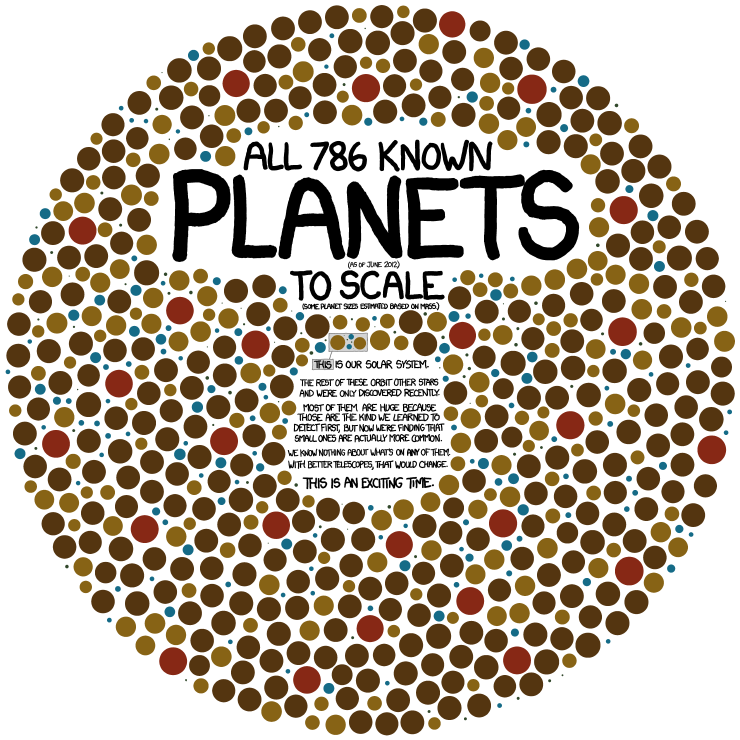Fast forward about 250 years from Newton. In the mid-1900s, worlds beyond our solar system had yet to be probed despite age-old foundations provided by scientists like Kepler and Newton. While standing on the shoulders of these giants, the myriad worlds beyond our own were still mere speculation. We had no idea if exoplanets even existed.
Another renaissance was necessary--another rebirth of inspiration in the field of exoplanetary science to coax the field’s vision into reality. This came in the form of Otto Struve, who estimated there were as many as 50 billion exoplanets and a high possibility of extraterrestrial life.
“[I]t is probable that a good many of the billions of planets in the Milky Way support intelligent forms of life. To me this conclusion is of great philosophical interest. I believe that science has reached the point where it is necessary to take into account the action of intelligent beings, in addition to the classical laws of physics." - Otto Struve
Struve’s 1952 paper was entitled, “Proposal for a Project of High-Precision Stellar Radial Velocity Work” and was only a page and a half long, but was far ahead of its time. It detailed the possibilities of detecting a planet by observing a host star’s motion about the system’s center of mass, and also mentioned “eclipses,” which we now refer to as transits. The paper reasons through why radial velocities should be observable, and concludes that it should be possible to detect Jupiter mass planets, even with the technology of the time. In 1973, Griffin and Griffin published an inspiring article describing a technique that made use of telluric absorption lines to improve radial velocity precision into the regime of planet detection. These conceptual and practical advancements set the course for exoplanetary discoveries later that century, and the philosophical musings that cost Giordano Bruno his life began to enter into the realm of irrefutable scientific confirmation. We were getting closer, and the hunt for planets intensified.
But the search was struggling; all claims of planets found were withdrawn as false alarms. In 1988, Campbell et al. published a paper describing several potential stellar companions, but their data was not concrete enough to earn them the honor of having discovered the first exoplanet. They retracted their claim of planetary discovery. (Though fourteen years later, they were found to have been correct.) Finally, in 1992, a breakthrough was reached in the most surprising of places.
Alexander Wolszczan and Dale Frail were radio astronomers, not particularly looking for planets, but they happened to find not one, but two, around a pulsar. Now these were very different from the Solar System planets, the only known planets of the time. A pulsar is a spinning neutron star, the remnant of a giant supernova explosion, and any planets around one would be formed in a drastically different way than those in our own Solar System. As the first planets detected, it is safe to say that nobody expected them to be like this. Pulsars are observed to have a focused beam of intense electromagnetic radiation, like a spinning lighthouse, and their extremely stable rotation translates to very precise regularity in the arrival time of these radiation pulses. But when the star has a planetary companion, its rotation about the system’s center of mass creates a slight, but detectable, sinusoidal variation in the pulse timing. After combing over the data carefully, Wolszczan and Frail concluded that they had detected exoplanets.
The scientific community went wild.
“We were not looking for planets, we were just a couple of clueless radio astronomers trying to understand a puzzle with the data,” Dr. Frail says, reminiscing upon the time when the paper was published, and the first exoplanets became official. “Our effort gave the field a push.”
The existence of pulsar planets is extremely rare, with only two known systems and a pending third. In terms of studying them, there’s not too much that’s applicable to our solar system, or others. But what this discovery indicated was not a huge opportunity for capitalizing on pulsar planets themselves, instead, it was that the field was “on the right track.”
Enthusiasm and motivation was revived in the search for exoplanets, and from the discovery of the pulsar planets, we entered the home stretch. Although pulsar planets could not be used as a close analogy to our own planet and origins, simply because of their extremely rare nature and strange method of formation, they indicated the existence of extrasolar planets. Three years later, the first exoplanet around a main sequence star was triumphantly detected, and since then, we have confirmed the existence of approximately 786 planets around stars other than the Sun. If it hadn’t been for Wolszczan and Frail, hope and interest may have continued to fizzle away, and knowledge of these new worlds may have remained hidden away in the cosmos.
Many thanks to Dr. Dale Frail for graciously taking the time to interview with us!
 |
| xkcd.com |
No comments:
Post a Comment